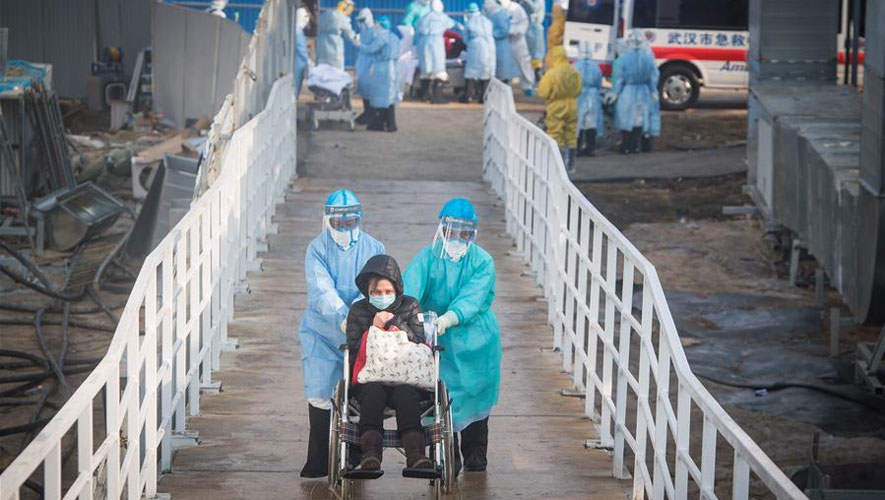The 1960s and 1970s were touted as the golden age of Cambodian cinema.
For the latest Cambodian Business news, visit Khmer Times Business
More than 300 movies were made for an audience that was highly supportive of local movies.
However, over the years, the popularity of local films waned, with the entry of foreign movies from around the region and the West.
International blockbusters such as Avengers: Infinity War and Captain Marvel have taken the box office by storm around the world including Cambodia.
This has not been the case for locally produced movies.
While the Cambodian local film sector has fared decently in terms of reception, the same cannot be said internationally.
According to a media report quoting Cambodian film distributor Westec Media Ltd, 2 million tickets are sold per annum in the Kingdom with a year-on-year growth of 20 percent.
Westec has partnered with Hollywood production giants such as Universal Studios Inc, Walt Disney Co, Warner Bros Entertainment Inc and Twenty-First Century Fox Inc to bring in box office hits.
There have been milestones that have been achieved in recent years in the Kingdom with blockbuster movies such as Marvel’s Avengers: Infinity War that racked in $550,000 in 2018, and The Fate of The Furious which earned $450,000 in 2017.
“I think Hollywood movies still have the biggest openings in the country because teenagers are more attracted to the Hollywood market,” says Chy Sila, chief executive officer of Sabay Digital Corp which owns Sabay MVP, a licensed film distributor established in 2011.
Sila points out that while Cambodian movies have a lot of potential, it lacks creative content to attract a larger audience despite there being a high demand.
“The audience is often the last part of the stage. If you have good content, even minimal marketing is sufficient to attract them,” he says.
Thriller or horror flicks
In recent years, trends show that Cambodians often opt for thriller or horror flicks. While popular with teenagers, horror or romance movies in Cambodia are produced on a low-budget, resulting in low quality performances and effects. Thai horror movies, some of which are also low-budget movies, remain immensely popular among locals.
Community movie theatre The Flicks, one of the pioneer independent cinemas in Phnom Penh, showcases “better films”, an expression used by managing director Ramon Stoppenlenburg to describe the type of movies he airs.
He believes that his choice of movies are the types that locals want to watch rather than low budget horror and action movies.
“My target audience at The Flicks visit our cinema for what we call the better films, those that don’t reach a large cinema audience, but are still highly acclaimed or made by well-known directors,” Stoppenlenburg says.
“We encourage our foreign movie-goers to bring along their Khmer friends for screenings of popular classics such as 1984 and Shawshank Redemption, which is being aired in conjunction with its 25th anniversary to create interest among locals,” he adds.
Award-winning movie
Although independent movies in Khmer or foreign languages do not attract much attention from locals, foreigners enjoy such movies.
Cambodia’s internationally renowned and Oscar-nominated filmmaker and producer Rithy Panh has delivered award winning Khmer films and documentaries that garnered attention on international platforms.
In 2003, his movie S-21: The Khmer Rouge Killing Machine won the humanitarian award at the Hong Kong International Film Festival in 2003, the FIPRESCI Prize at the Dok Leipzig as well as a special jury prize at the Copenhagen International Film Festival.
Financially-stricken sector
Despite the growing film industry, local film producers continue to rue the sector’s financial constraints in delivering local movies in the country.
Box office revenues vary between $20,000 and, for the very successful, $120,000. However, with payments to the cinema and investors, companies struggle to remain in the black.
Cambodian-French filmmaker Loy Te says the average budget for local film production is around $50,000.
However, a movie he produced called Jailbreak cost nearly $200,000 while the budget for another film The Prey was higher than that, he says.
“Those budgets were needed to ensure international quality and worldwide distribution. We are still very far from Hollywood’s multi-million dollar film budgets,” Te says.
“I believe that one of the biggest challenges here is always to recoup your investment on films and be able to earn profits because the industry is still small and has some 65 cinemas screens at the moment,” he says.
Te says that the limitation in the potential income directly affects the “safe range” for local film budgets, and the risk that productions are willing to take.
Sila agrees that it is a struggle to develop local movies but stresses that quality should not be compromised.
“It is similar to Malaysia and Vietnam where the local film industry is growing but not without problems. However, local producers cannot just make horror movies all the time,” he says.
Fatigue setting in
The local horror comedy genre has long been the “king at box offices” in Cambodia but Te says the audience is starting to experience fatigue from such movies.
The taste for varied content from movie-goers is changing with increased exposure to Hollywood movies or films from neighbouring countries such as Thailand and Indonesia.
“People want to see more local films for sure, and support the industry, but it is up to local producers to deliver something new and engaging for their fans,” Te adds.
‘No direct effect’
With the pervasion of streaming services and the unlicensed players amid the rise of smartphone usage in Cambodia, there is the issue of the cinema business being affected.
However, Sila dismisses the notion, saying that there is no direct effect.
He is optimistic that with more streaming services, people would want to watch films, meaning that licensed cinemas in the country would be able to offer a premium experience to those willing to pay a premium to experience something different.
Echoing Sila, Stoppenlenburg adds that karaoke centres can turn into cosy movie lounges when someone “pops a USB stick into a projector” – and that is not a threat to films.
“We offer a homely setting while creating a community of movie lovers. It is rather hard to compete with that and our rather eclectic movie scheduling,” he says.
More support needed
According to Te, the government is increasingly supportive of the film industry, as evidenced in its participation in film markets and festivals to connect Cambodia with other territories. It also offers tax-free status to local production companies.
Earlier this year, Prime Minister Hun Sen announced that the government will not tax the Cambodian film industry until 2023 in support of the industry. People were also reminded that all TV stations must air Cambodian movies from 7pm to 9pm daily.
“It’s a great first step but there are still many benefits that can be offered, such as those with a culture and tourism approach. It would be good to push for more promotion on Cambodia as a destination for film production. This can be done by offering tax incentives or rebates .Because Cambodia currently lacks proper film schools or training centres, local crews learn on the job and while working alongside Hollywood veterans on a big budget foreign films,” Te says.




